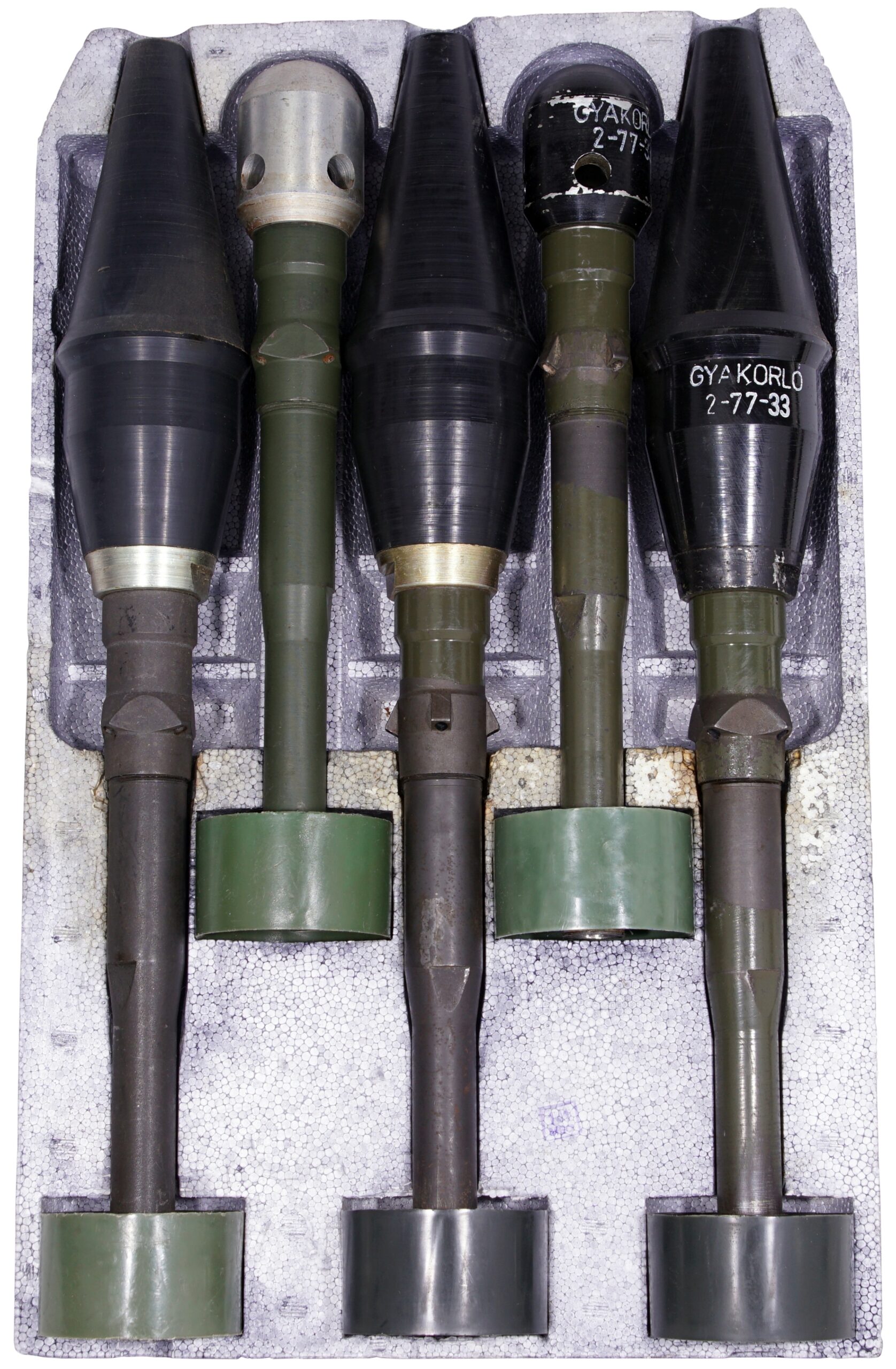By Michael Heidler
Like all Eastern Bloc countries, Hungary had introduced assault rifles based on the Kalashnikov design. Initially still close to the Russian model, more and more of Hungary’s own ideas were introduced into later models.
It all began in 1957, when the traditional company Fémáru, Fegyver -és Gépgyár (Metalware, Arms and Machine Factory), or FÉG for short, tooled up for production of a copy of the Russian AK-47. Two years later the Hungarian weapon named “AK-55” left the assembly line in the classic design with a wooden handguard and stock. The milled receivers were supplied by the Danuvia Gépgyár machine factory. When FÉG changed over to the advanced model AKM-63, the receivers made of pressed sheet metal were manufactured by FÉG itself. The additional front pistol grip, which was supposed to provide a better hold during fully automatic fire, was already characteristic at that time. Its inclined position is due to the curved magazines. Like all other Hungarian-made assault rifles, the Automatic Fire position was marked with the infinity symbol “∞” and the Semiautomatic position was marked with “I.”
The AKM-63 still had a solid wooden stock and was too bulky and unhandy for many units, such as drivers, motorized infantry or airborne troops. After some development time the new model Automata Módosított Deszant 1965 (automatic modified for paratroopers), abbreviated AMD-65, was created. The front handguard was now made of perforated sheet metal, and the two grips were initially made of wood, later of grey polypropylene. A folding stock that could be swung to the right side replaced the previous fixed wooden stock, and by shortening the barrel to only 12.5 inches, a further saving in total length was achieved. To prevent muzzle climb when firing in fully automatic mode, the weapon was equipped with a very remarkable muzzle brake. It also significantly reduced the muzzle flash but made the weapon noticeably louder. The standard magazine was designed for 30 rounds. A shorter magazine for 20 rounds and a longer one for 40 rounds were not very popular in the army.
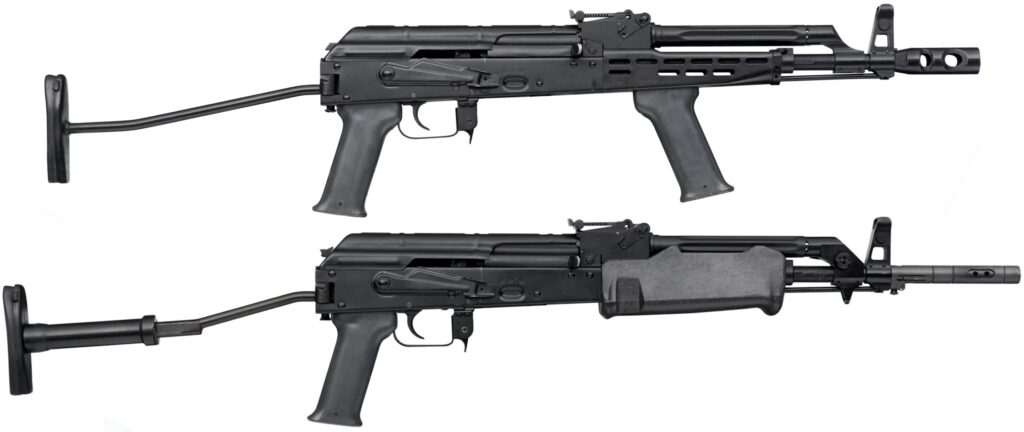
At that time, rifle grenades were already part of the Hungarian armament. However, the GP-25 underbarrel grenade launcher for VOG-25 front loading 40mm ammunition, which could be attached under the barrel of the AMD-65, did not satisfy the Hungarians and was only issued in small numbers. In search of a better solution, they started to modify the AMD-65 fundamentally and to optimize it as an additional model variant for the new role.

For this purpose, the weapon was given a modified muzzle section without a muzzle break but with an integral spigot-type launcher. The fin-stabilized grenades with hollow stem were pushed onto the launcher. Small strips of spring sheet metal held the grenade firmly in position. The gas port on top of the barrel could be closed by means of a rotary lever (position NY), so that the entire gas pressure of the propelling cartridge was acting on the rifle grenade. However, the weapon then only worked as a repeater and had to be cocked by hand after each shot. A special magazine with a six- round capacity was issued for the propelling cartridges. A welded metal strip inside the magazine body prevented accidental filling with the longer regular ball rounds. Firing the wrong round would have been disastrous, because Hungarian rifle grenades used with the AMP-69 were not pass-through or bullet-trap designs. The usual grenade packaging contained five grenades, and the same number of propelling cartridges was sealed in a transparent blister pack. A side rail mounts a high-angle optical sight that ensured a good hit rate at up to 450m (1,476 feet).
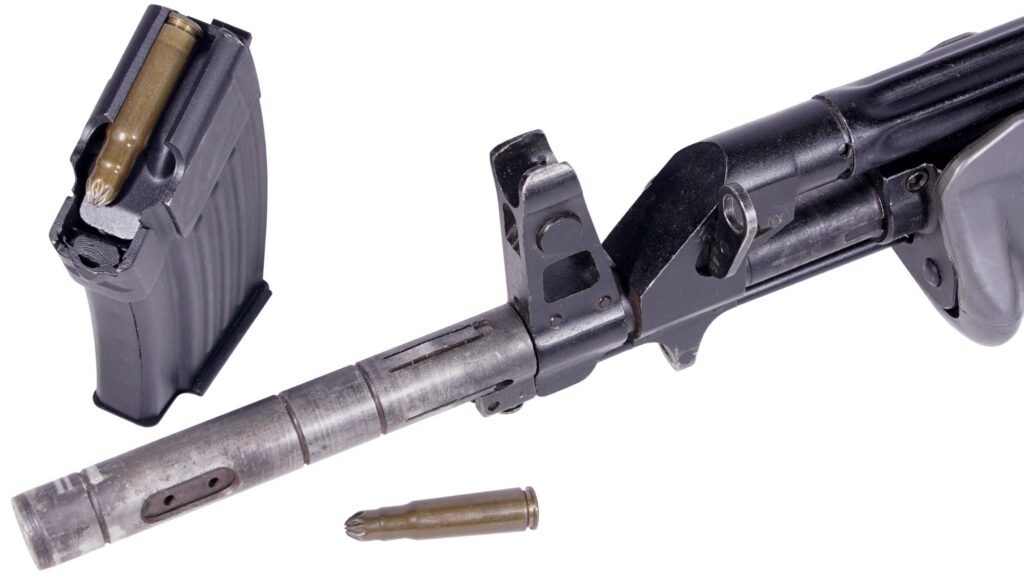
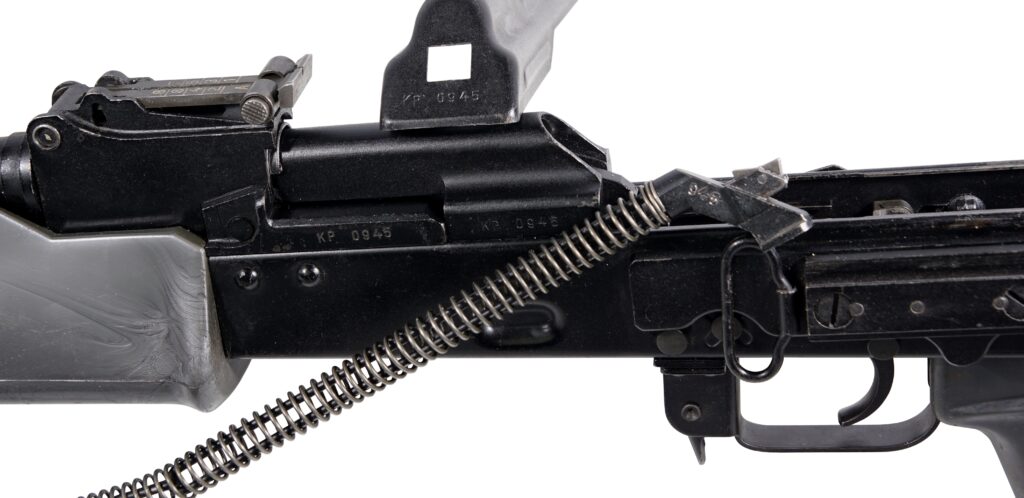
Launching a rifle grenade caused violent recoil. In order to make this recoil acceptable for the shooter, a shock absorber was integrated into the strut of the folding stock. The front pistol grip was omitted and replaced by a handguard fitted with two recoil-absorbing springs. A pliable rubber was chosen for coating the rear pistol grip, and a circumferential bulge was added to prevent the hand from slipping up and getting injured. During the tests, it had turned out that the recoil often blew the dust cover off. Therefore the end of the recoil spring guide rod, which also holds the cover in place, received an additional locking device.
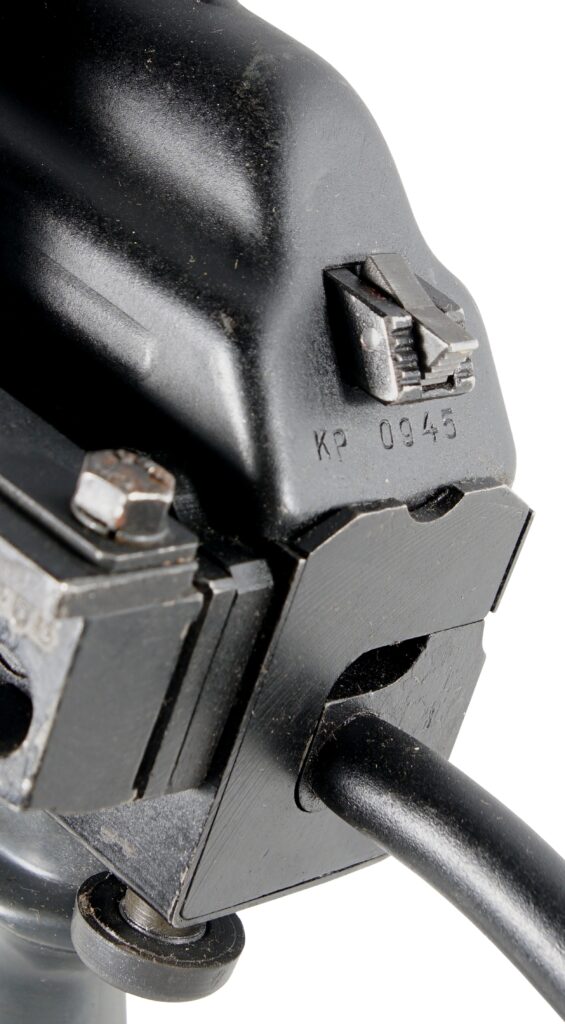
The development work was carried out by a team consisting of János Egerszegi, István Berecki and István Nagy. It was headed by Károly Zala, the then chief engineer of FÉG. A secret patent with the number 173 689 was granted. The officer János Egerszegi presented the weapon at subsequent demonstrations at the Army and Ministry of the Interior. The Hungarian People’s Army (Magyar Néphadsereg / MN) adopted the weapon on August 2, 1974. The Workers’ Militia (Munkásörség / MÖ) adopted it in 1975, the same year as the Ministry of the Interior (Belügyminisztérium / BM) for use by police and border guard units. The official designation was Automata Módosított Puskagránát 1969 (Automatic Modified for Rifle Grenade), or AMP-69 for short.

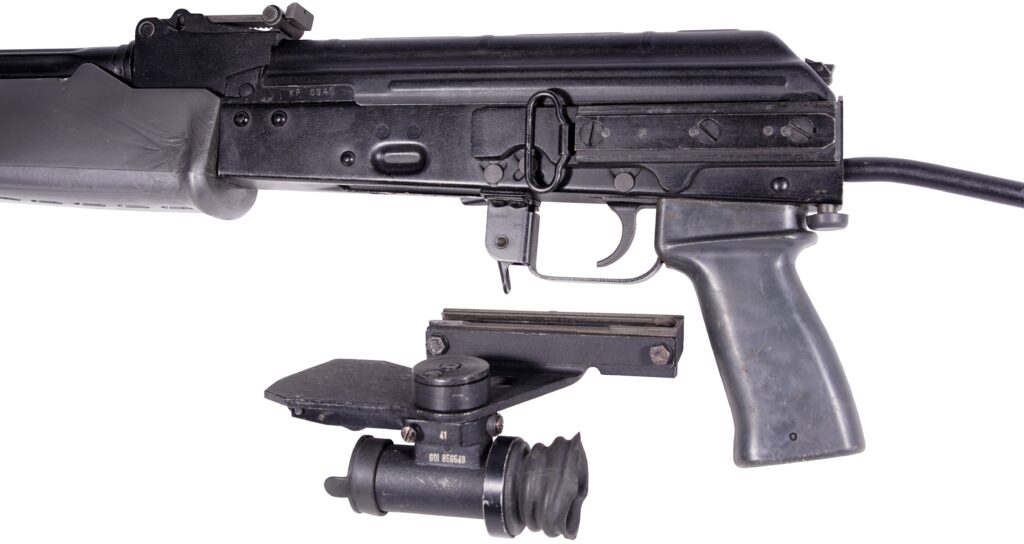
With the hollow-charge rifle grenade PGK (Puskagránát Kumulatív) the infantry was able to engage enemy armored vehicles relatively effectively even without heavy weapons. In addition, the high-explosive and fragmentation rifle grenade PGR (Puskagránát Repesz) was used against light armor and soft targets. The rifle grenades were not launched by the propelling cartridge alone but contained an additional internal propellant charge. The four exit holes for the combustion gases are arranged in a ring around the stem of the grenades. For training purposes there were also reusable practice grenades PGK-GY and PGR-GY (Gyakorló / practice), the latter of which could be fitted with a bang/smoke cartridge. The OPG (Puskagránát Oktató) was a tubular, non-functional metal body with the weight of a rifle grenade. It enabled the soldier to become accustomed to the feeling of launching a grenade. The police used a tear gas grenade (Könnygáz).
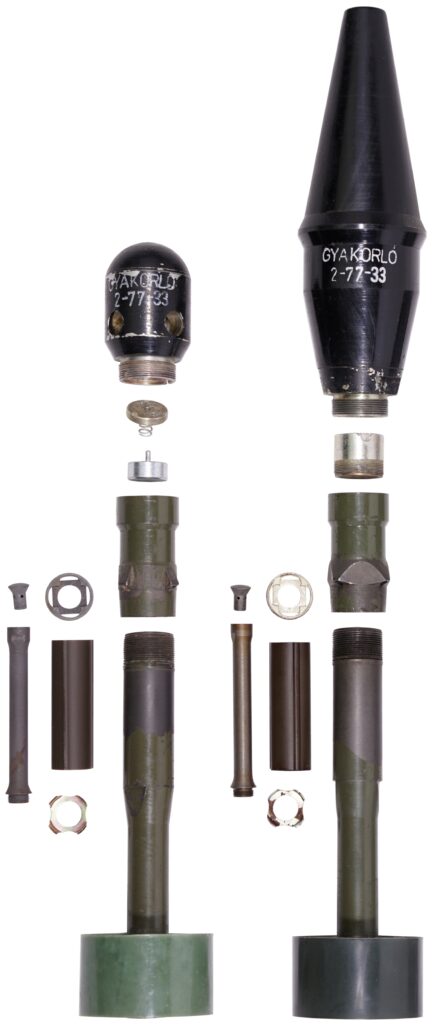
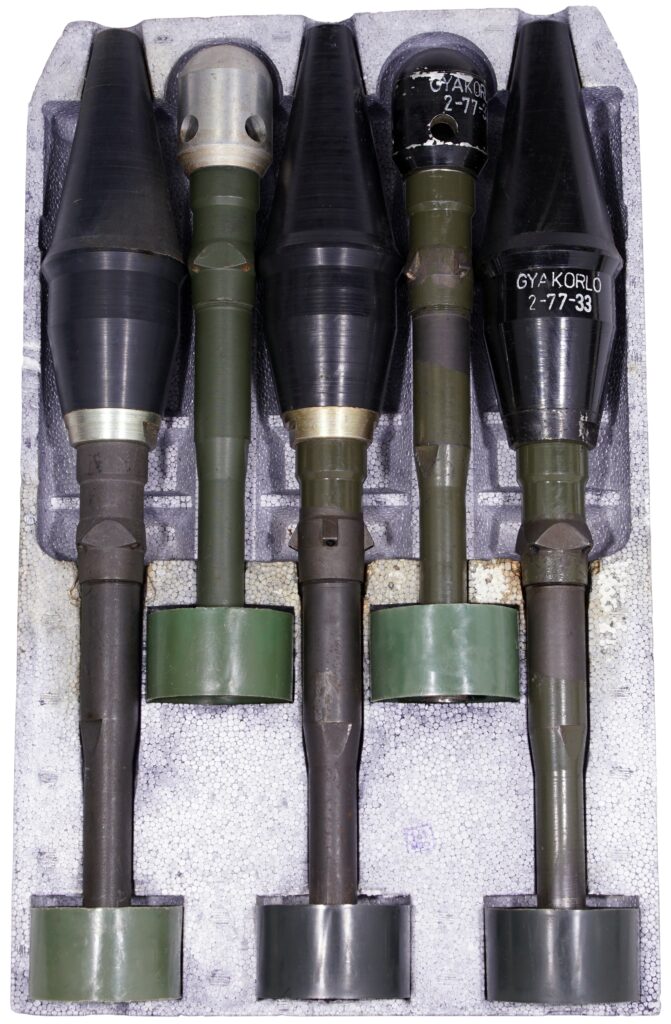
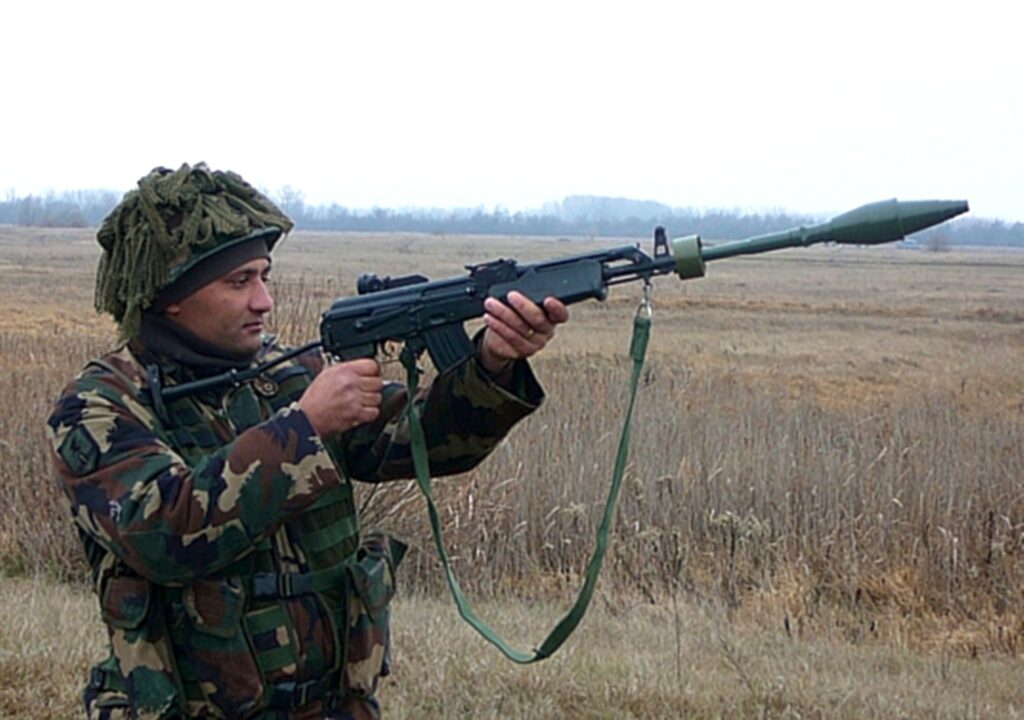
With the AMD-65 and AMP-69, Hungary achieved some export successes, including to the West Bank, Lebanon, Libya, Georgia, Angola, South Africa, North Korea and Panama, and the weapons can be seen on various photos from these crisis areas. However, due to the lack of rifle grenades, the AMP-69 is mostly used as a regular assault rifle. Today many local police units in Afghanistan are equipped with the AMD-65 due to the fact that for the Hungarian military service it has been largely replaced by the AK-63, a more traditional AKM copy with lower manufacturing costs.
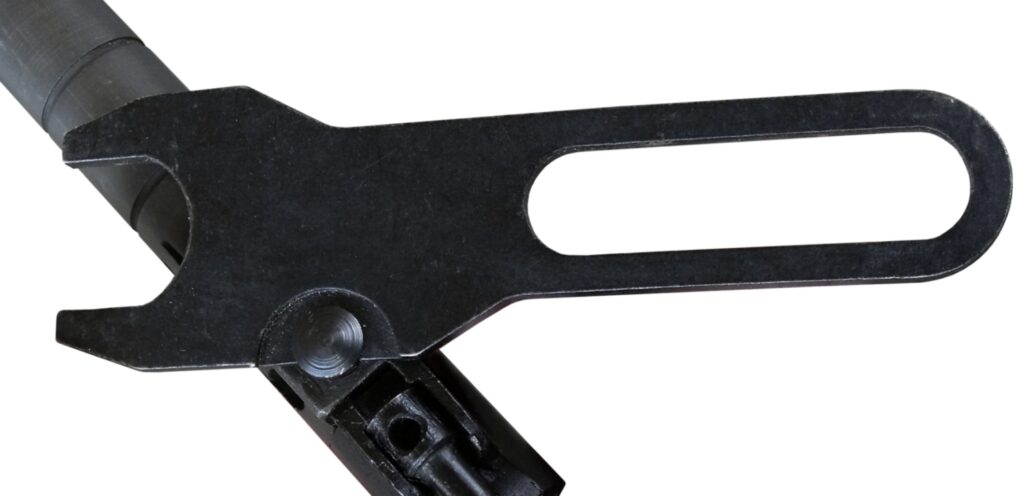
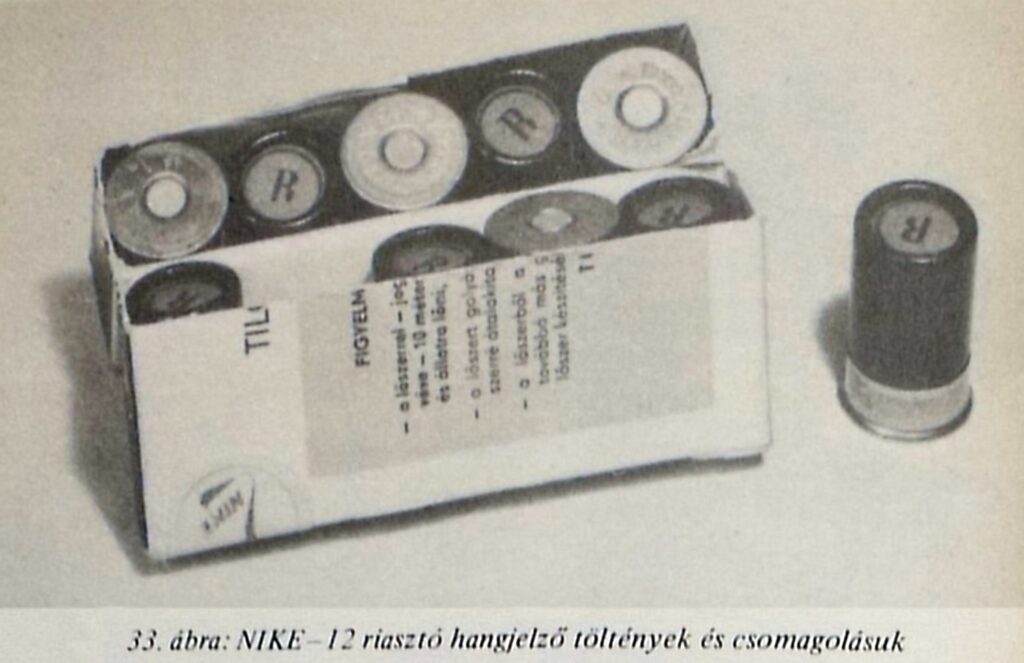
| Technical data: | AMD-65 | AMP-69 |
| Caliber | 7.62x39mm | 7.62x39mm |
| Length (stock extended) | 33.3in | 36.2in |
| Length (stock retracted) | 25.5in | 25.2in |
| Length of barrel | 12.5in | 16.3in |
| Weight (empty) | 8.4lb | 9.0lb |
| Rate of fire | 650 rounds/minute | 600 rounds/minute |
| This article first appeared in Small Arms Review V24N9 (November 2020) |



